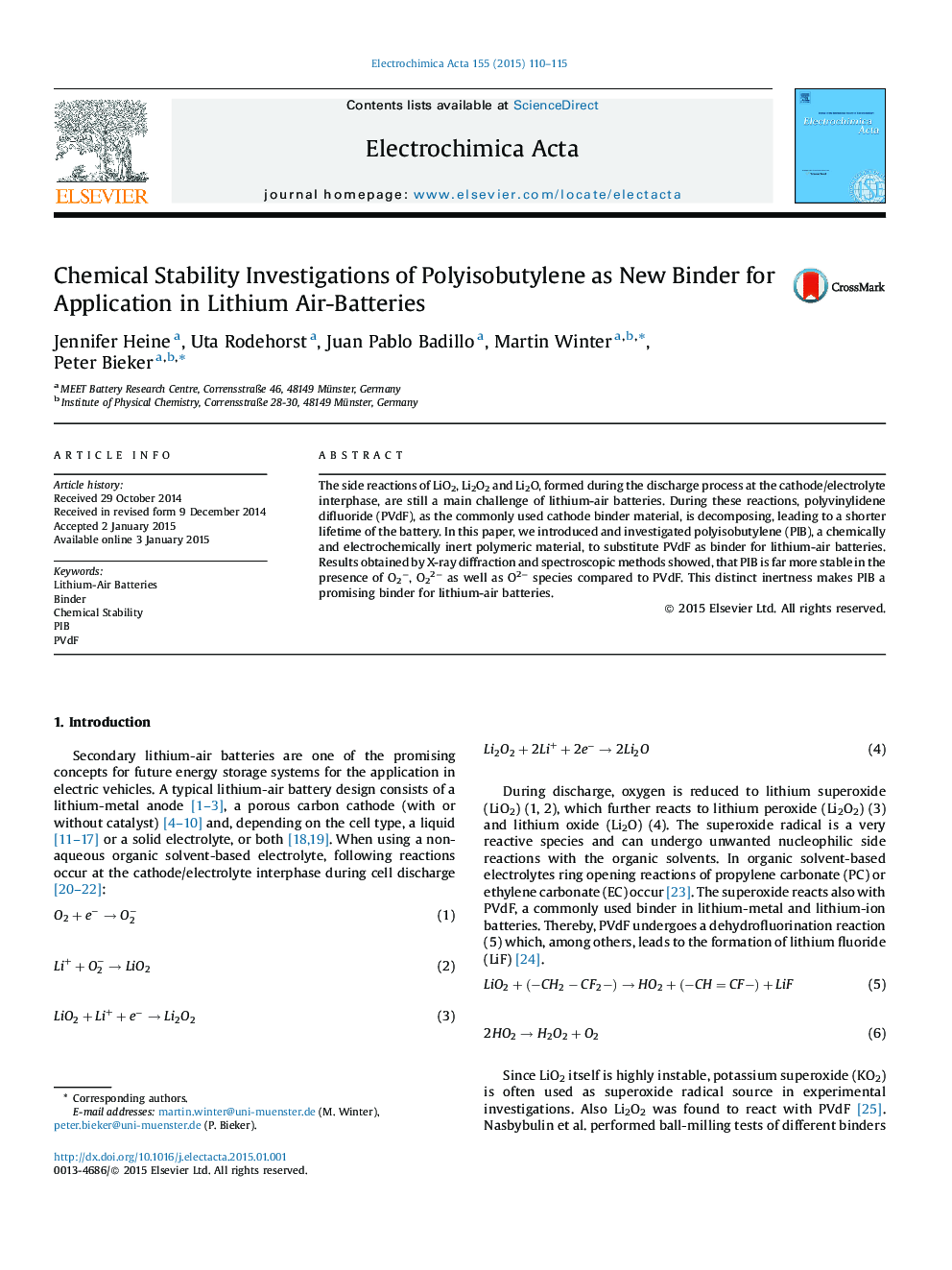| Article ID | Journal | Published Year | Pages | File Type |
|---|---|---|---|---|
| 184555 | Electrochimica Acta | 2015 | 6 Pages |
ABSTRACTThe side reactions of LiO2, Li2O2 and Li2O, formed during the discharge process at the cathode/electrolyte interphase, are still a main challenge of lithium-air batteries. During these reactions, polyvinylidene difluoride (PVdF), as the commonly used cathode binder material, is decomposing, leading to a shorter lifetime of the battery. In this paper, we introduced and investigated polyisobutylene (PIB), a chemically and electrochemically inert polymeric material, to substitute PVdF as binder for lithium-air batteries. Results obtained by X-ray diffraction and spectroscopic methods showed, that PIB is far more stable in the presence of O2−, O22− as well as O2− species compared to PVdF. This distinct inertness makes PIB a promising binder for lithium-air batteries.
